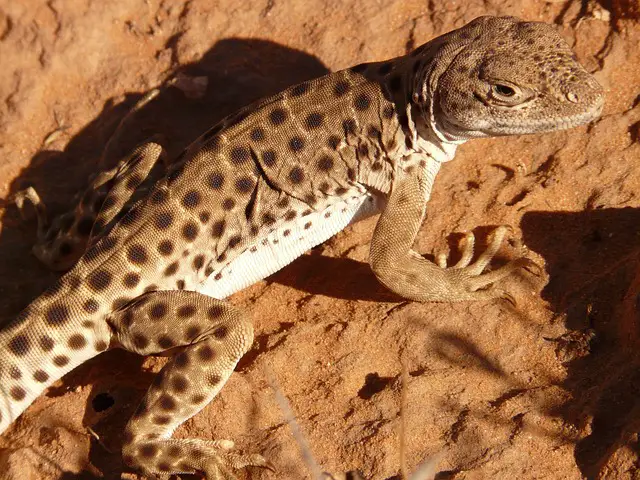For Floridians, cold months usually mean a break from the heat. But what about Florida lizards? While they may not be able to feel the chill in the air, they still need to find ways to survive it. So where do Florida lizards go when it’s cold? Let’s take a look and see.
Where do Florida lizards go when it’s cold?
Florida lizards typically hibernate during the colder months; it is a form of brumation where they remain inactive to survive suboptimal temperatures.
They remain concealed beneath logs or rocks and slow their metabolisms to conserve energy while they await the return of warmer climatic conditions.
Without sunlight, adequate food sources can prove difficult, so preparing in advance with body stores of fat is essential for survival.
Notably, the lizards‘ tiny bodies are adept at retaining heat, allowing them to maintain body temperature even when hunkering in temperatures close to freezing.
The majority of Florida lizards are ectotherms.
This means their body temperature is determined by their environment and other external sources such as sunlight or heated rocks.
These lizards will burrow underground or hide under leaf litter or other debris to keep warm as temperatures drop.
This behavior is called brumation and helps them avoid winter’s coldest temperatures and conserve energy until spring arrives.
Special adaptations
In addition, some species of lizards have evolved adaptations that help them survive cold weather.
For example, anoles have evolved a specialized scale on their bellies, which helps them absorb more heat from their environment.
Additionally, some species can control their metabolism to slow down during colder months and save energy until warmer weather returns.
This allows them to remain active during periods of extreme cold without expending too much energy.
Milder winters
In areas with milder winters, some species of lizards may remain active year-round if enough food is available.
However, this isn’t always the case, as some species may choose to hibernate during very cold periods when food becomes scarce, or temperatures become too low for them to survive outdoors.
Many species of lizards will migrate southward during winter months in search of more favorable climates where they can thrive until spring returns.
Why are there so many lizards in Florida?
Florida is a prime habitat for lizards due to its high temperatures and humid weather.
Subtropical climates like that of Florida provide the perfect environment for these reptiles, as it replicates their natural habitats in other regions.
The abundance of insects in Florida is an ideal food source for lizards, allowing them to thrive in urban and wild spaces.
Additionally, Florida’s limestone formations provide underground tunnels and passageways that many species use as hideaways from weather or predators.
In turn, the lizards become part of the state’s natural wildlife cycle and help maintain insect populations that could otherwise become problematic to local ecosystems.
Where do Florida Geckos go in the winter?
The Florida Gecko is a reptile native to the Sunshine State, where it typically resides during the warm weather months.
However, these resilient creatures adorn their coats of adaptation during the cooler winter temperatures and head south for greener pastures. In mild climates across the southern United States, such as Texas and Georgia, Geckos migrate to survive until the favorable temperatures of late February or early March.
To aid their survival process in unfamiliar regions, they require habitats similar to what they are accustomed to – such as tropical forests and sandy dunes – while using nooks within tree hollows and crevices as temporary havens at night.
With an elevated Ability-to-Survive factor and well-oiled migrating behavior, members of this species have proven themselves quite adept at staying warm through even the harshest winters.
Conclusion:
Regardless of how they adapt to colder temperatures, one thing is sure – Florida lizards are resilient creatures who know how to make it through even the harshest winters. Whether burrowing underground or hibernating until warmer weather returns, these little critters know what to do when temperatures drop outside.
With this knowledge in mind, you can rest assured that your pet lizard will stay safe and comfortable when winter arrives in Florida.




